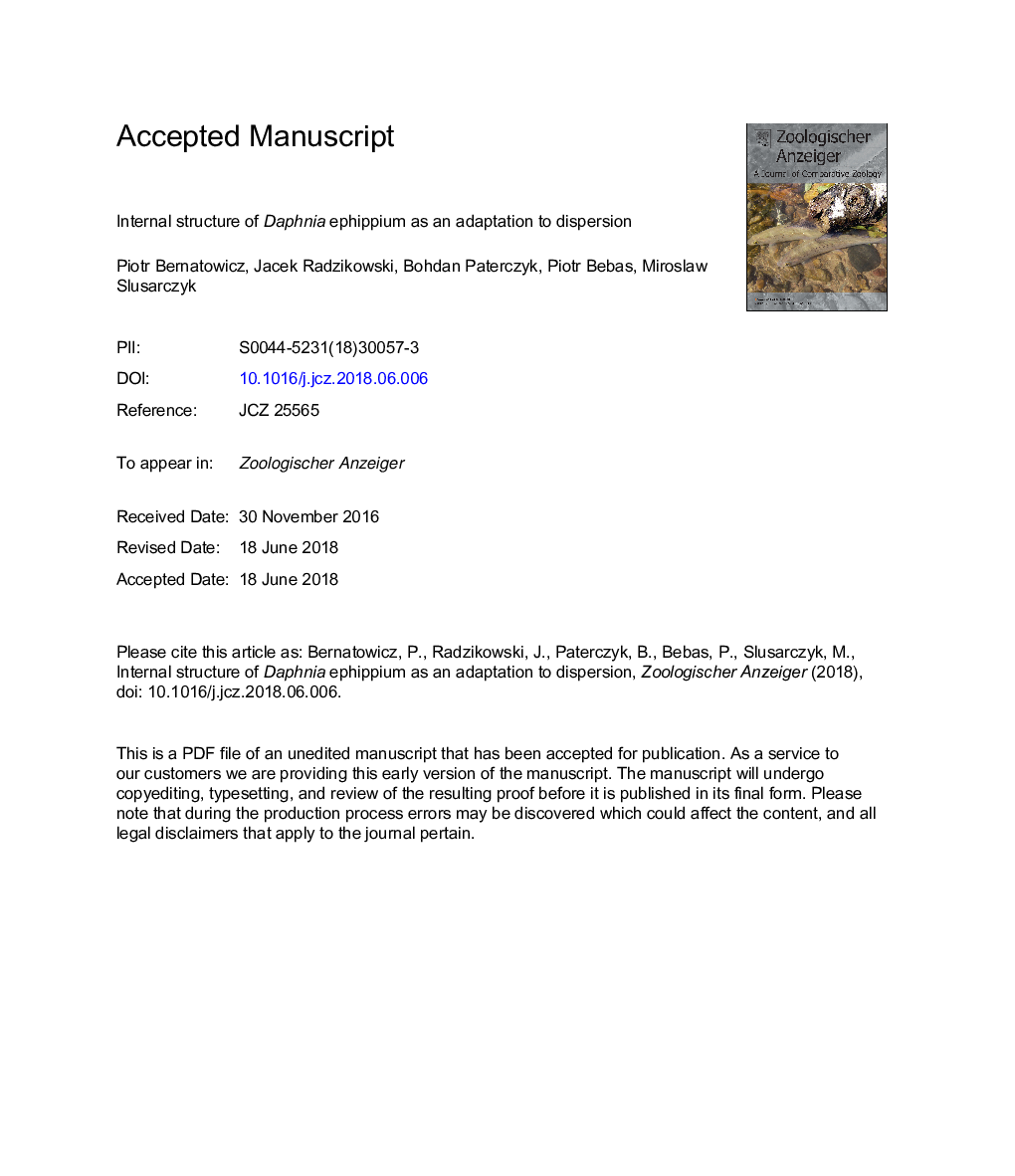| Article ID | Journal | Published Year | Pages | File Type |
|---|---|---|---|---|
| 8962670 | Zoologischer Anzeiger - A Journal of Comparative Zoology | 2018 | 41 Pages |
Abstract
We compared the internal structure and considered the potential functions of the ephippial walls of several species of Daphniidae. We found that the walls of ephippia in Daphniidae are composed of three interconnected layers of different structure. The external and internal layers, which are relatively solid, are covered by cell-like multiple polyhedron compartments formed by the middle layer. The three layers, which resemble a honeycomb structure, may offer mechanical protection for dormant eggs on one hand and may facilitate passive dispersal of ephippia containing diapausing eggs on the other. The cell-like compartments within the wall may be filled with air that makes them buoyant and may facilitate their passive dispersal within or between water bodies by animate or inanimate vectors operating on the water surface. We found significant structural differences between the ephippia of representatives from the subgenus Daphnia vs Ctenodaphnia. In the first group (in Daphniapulex and Daphnialongispina) the middle layer is formed from empty cells readily filled with air even after brief contact with the atmosphere while in Ctenodaphnia such as Daphniamagna and Daphnialumholtzi the middle layer of the ephippium cells are filled with filaments which hardly absorb atmospheric air. Structural differences between the two groups may reflect both their phylogenetic divergence and their various dispersal strategies.
Keywords
Related Topics
Life Sciences
Agricultural and Biological Sciences
Animal Science and Zoology
Authors
Piotr Bernatowicz, Jacek Radzikowski, Bohdan Paterczyk, Piotr Bebas, Miroslaw Slusarczyk,
